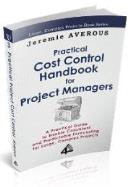When it comes to forecasting the final outcome of a project in terms of cost and profit result, two different forecasts need to be established: a prudent ‘Estimate at Completion’ used for short term accounting reporting, as well as an ‘Achievable/ Likely’ forecast derived from a sensitivity analysis, that is used to anticipate the organization’s longer term financial performance. Both are equally important to the project-driven organization and should call for the same level of attention from the Project Manager. In our new White Paper 2014-08 we investigate why they are both important and how they should be derived and considered.
The EAC is a prudent estimate of the project outcome. It contains a significant element of contingency (which has been calculated using a specific process that can involve advanced statistical methods). It is also often conservative because it recognizes costs immediately but revenue only when a Change Order has been formally signed by the Client. Hence the EAC is supposed to be a relatively pessimistic – or prudent – view of project outcome; some organizations describe it as something like a P80 (only 20% chances to be worse).
The ‘Achievable’/ ‘Likely’ forecast, contained in a sensitivity table, on the other hand, reflects what the project believes it can achieve. It reflects a reasonable amount of additional revenue from unsigned Change Orders and the P50 (achievable) contribution from the contingency calculation. It also reflects risks and opportunities that have not yet materialized but that the project manager reasonably believes will happen.
At the company financial level which aggregates several projects, the ‘Achievable’ value or some part thereof is considered for the company financial forecast, which is why it is so important to the organization.
Project Managers should thus focus their attention as much on the Estimate at Completion (EAC) as on the ‘Achievable’ or ‘Likely’ forecast, because of the implications for the organization. It is also a way to go beyond the necessarily prudent (accounting-driven) EAC to really understand the potential of the project. Understand how that principle works in reality in our new White Paper 2014-08 “Why the ‘Achievable’ project forecast is as important as the Prudent ‘Estimate At Completion’”!
Find all these principles of Project Cost Control exposed in a comprehensive manner in our new Handbook,  Practical Project Cost Control for Project Managers (now published – click on the link to see it on Amazon!)
Practical Project Cost Control for Project Managers (now published – click on the link to see it on Amazon!)


